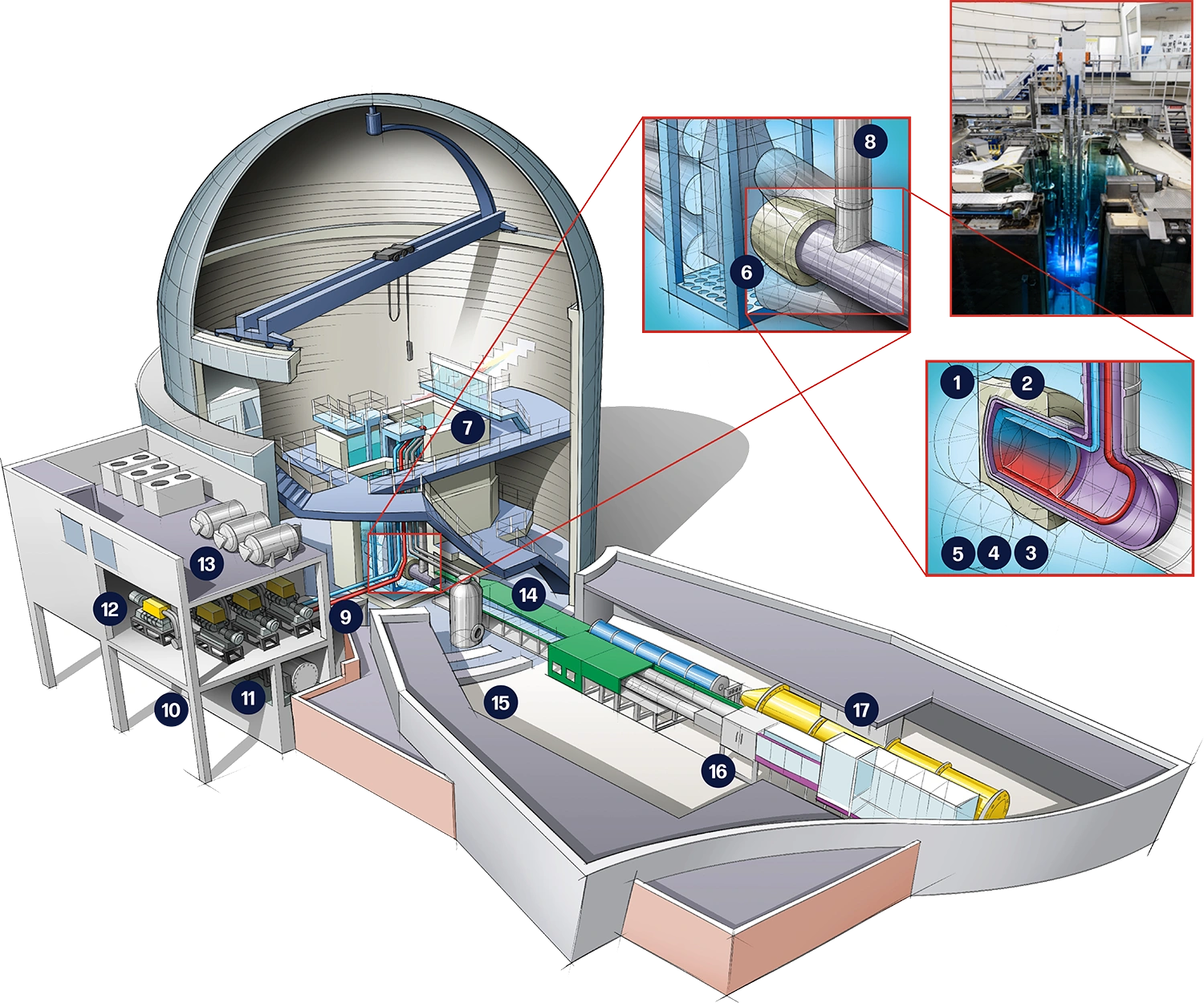Technology & Innovation Reactor
Technology & Innovation Reactor
Cold neutron source
breathes new life into research reactor
Text Jos Wassink
© Illustration Stephan Timmers
The Reactor Institute Delft’s 1963 research reactor has been thoroughly modernised. After 10 years and a cost of over €130 million, the Oyster renovation project was completed last autumn.

OYSTER is an acronym for optimised yield – for science, technology and education of – radiation. The optimisation was achieved in part by installing a cold neutron source 1 – the core of the project. It’s a three-walled concentric structure surrounded by a Beryllium ring 2 that bundles the neutrons towards the measuring instruments. Inside the outer wall is a layer of helium gas 3, followed by a vacuum layer 4 and finally one and a half litres of liquid hydrogen 5 at a temperature of 22 Kelvin (approx. -250°C). The cold source was installed in one of the beam tubes 6 a few centimetres from the reactor core, at a depth of seven metres in the 250-cubic-metre reactor basin 7. As part of the IPA (In Pool Assembly) 8, a heat exchanger for cooling hydrogen with cold helium gas is located a few metres above the source. In the reactor hall, all hydrogen pipes are surrounded by an inert gas that prevents the mixing of hydrogen with oxygen (from the air) for safety reasons.
Liguefied
The radiation from the reactor (2.3 megawatts thermal) evaporates the hydrogen in the cold source. Most of the gas is then liquefied in the heat exchanger and sinks back into the cold source. A bundle of pipes 9 connects the installation in the basin to the external cooling structure: a vacuum pipe, hydrogen gas outlet, and cold helium gas supply and discharge pipes.
The pipes lead to a metallic rectangular structure 10 next to the reactor dome, which houses the equipment that maintains the temperature of the cold source. On the first floor are two large vacuum pumps 11 encased in centimetre-thick steel cylinders capable of withstanding a hydrogen explosion. Located one floor up are six Sterling cooling machines 12 of 50 kilowatts each that cool the helium gas. On the top floor are chillers that cool the cooling machines and another cylinder 13 for the expansion of cold helium.
More powerful
Liquid hydrogen slows neutrons from the reactor core from 25 MeV (mega electron volt) to 5-10 MeV. As a result, the average wavelength shifts from 0.18 to 0.4 nanometres. A green cabinet 14 in the reactor hall full of neutron-reflecting mirrors splits the beam into four smaller beams towards the experiment hall 15. The cold source means a much more powerful neutron beam for all the instruments there. For the ROG reflectometer 16, this translates into shorter measurement times and smaller samples. The Small Angle Neutron Scattering (Sans) instrument 17 only works optimally from a neutron wavelength of 0.6 nanometres, which was rarely possible without a cold source. Thanks to the cold source, Sans can now be used for the first time to study internal structures between a few and several hundred nanometres within materials.
For a complete overview of the instruments: Research Tools TU Delft Reactor Institute
